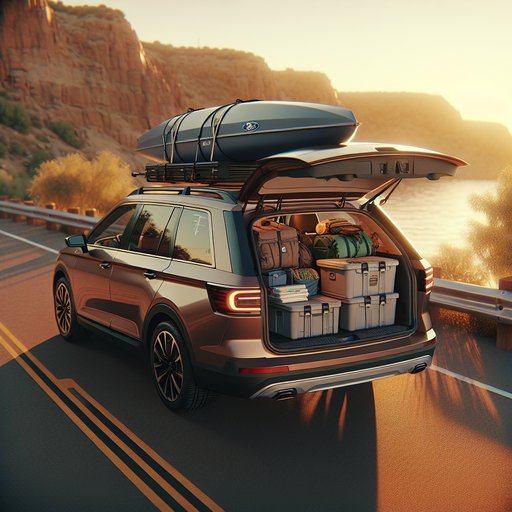
We spent a full day measuring the 2025 Subaru Outback’s cargo area with standard moving boxes and totes, testing its integrated roof rails, and evaluating load-securing points to see how it handles real-life hauling.
Our tester is a 2025 Subaru Outback Limited with the 2.5-liter flat-four (182 hp, 176 lb-ft) and standard AWD/CVT. Manufacturer cargo specs list 32.6 cu ft behind the second row and 75.6 cu ft with seats folded. Payload on our door sticker is 1,015 lb. Roof-rail dynamic load is labeled at 150 lb on this car.
Tires were at 35 psi, and we tested on level pavement at 72°F. We used two common “standards”: 18x18x16-inch moving boxes (about 3.0 cu ft each) and 27-gallon tote bins (approx. 30x20x15 inches). With a tape measure, we recorded 41.5 inches of floor length to the seatbacks, 43.0 inches between wheel arches (54.0 max width higher up), 31.0 inches to the headliner at the hatch, and a liftover height of 28.5 inches.
The hatch opening measured 49.0 inches wide and 30.5 inches tall at the narrowest point. Behind the second row, with the cargo cover in place, we fit four 18x18x16 boxes in a 2x2 grid (one layer). With the cover retracted, we stacked two layers for a total of eight boxes flush with the window line, maintaining rear visibility. Using 27-gallon totes, we fit two per layer and two layers (four total) with the cover retracted; two totes fit with the cover closed.
These counts matched the measured dimensions and were repeatable without forcing or deforming boxes. With the 60/40 seats folded (nearly flat), we loaded a 4x2 grid of 18-inch boxes (four deep, two across) and stacked two layers for 16 boxes while keeping a clear sightline out back. Pushing to the headliner and accepting reduced visibility, 20 boxes fit securely with minor filler bags in the gaps. For totes, we managed eight (two across, two deep, two high) with easy hatch closure, and a snug ninth could be added sideways at the tailgate.
The low, wide opening and flat floor simplify sliding heavy items; the liftover height is on the higher side versus crossovers with lower ground clearance, but it’s still manageable. Load securing is excellent. There are four solid metal D-rings at the cargo floor corners, plus two plastic grocery hooks and a 12V outlet on the right wall. Seatback release levers in the cargo bay speed up long-load changes.
The floor’s optional cargo tray on our car adds grip; with ratchet straps run low to the front D-rings, boxes stayed planted over a 25-mile loop including cobbles and highway expansion joints. Strap angles are shallow enough to keep tension, and the D-rings are spaced to allow cross-bracing of tall stacks. Roof-carrying is where the Outback shines. The integrated swing-out crossbars deploy in under two minutes without tools; we timed 1:40 for both bars.
They accept standard clamp-on accessories; we mounted a Thule Force XT L box in eight minutes solo. At 70 mph, wind noise rose from 69 to 71 dBA (smartphone meter) with bare bars and to 72–73 dBA with the box. Fuel economy dipped by roughly 2 mpg with the box installed. The rail sticker on our car lists a 150-lb dynamic limit—observe it, as it includes racks and cargo.
If your priority is painless hauling, the Outback’s square aperture, honest tie-downs, and tool-free roof system deliver. Real-world capacity equates to eight standard moving boxes behind the seats or 16 with them folded while keeping visibility, plus an easy eight large totes when you need rugged storage. Buyers who haul exceptionally heavy gear should watch payload and roof limits; otherwise, this is one of the most user-friendly cargo setups in the segment.












